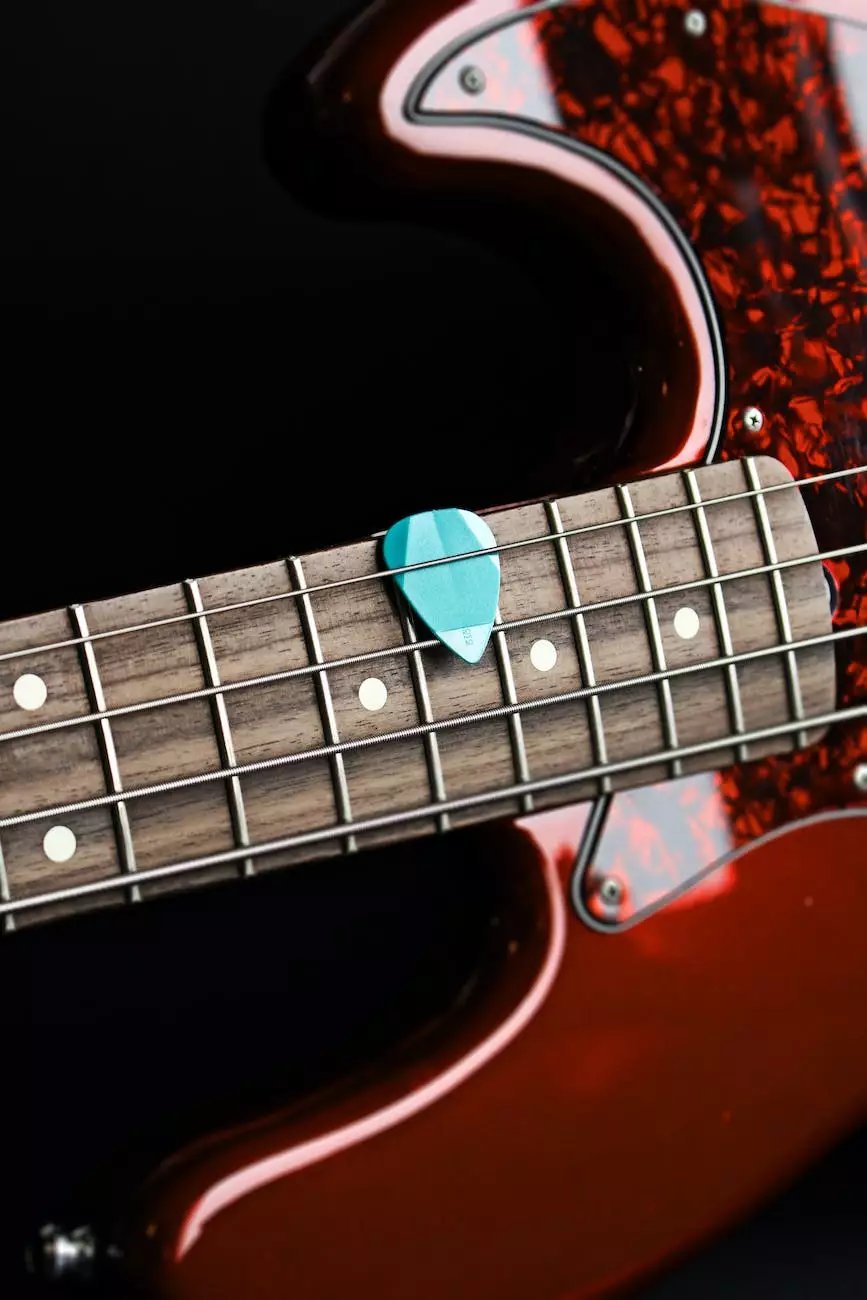The Anatomy of the Guitar - Acoustic & Electric
Products
Welcome to Cormon Cable and Distribution Inc., your trusted source of information and high-quality products in the Business and Consumer Services category. In this comprehensive guide, we will dive deep into the intricate details and components of both acoustic and electric guitars. Whether you are a beginner or an experienced player, understanding the anatomy of these fascinating instruments is essential for any guitar enthusiast.
The Components of the Acoustic Guitar
An acoustic guitar is a beautiful and versatile instrument that produces sound naturally without the need for amplification. To truly appreciate its magic, let's explore the important components that make up an acoustic guitar:
- Body: The body is the main hollow structure of the guitar, typically made of tonewoods such as spruce, mahogany, or rosewood. It amplifies the sound produced by the strings and contributes to the tone and resonance of the instrument.
- Top: The top, also known as the soundboard, is the front face of the guitar body. It plays a crucial role in transmitting vibrations and enhancing the overall projection and tone.
- Soundhole: Located on the top, the soundhole allows the sound to escape from the body and adds to the volume and projection of the instrument.
- Neck: The neck is the long, slender part of the guitar that extends from the body. It provides support for the strings and holds the fretboard.
- Fretboard: Commonly made of hardwood such as rosewood or maple, the fretboard is a smooth surface that houses the frets. It is where you press the strings to produce different notes and chords.
- Frets: Metal strips embedded on the fretboard, frets divide the neck into specific intervals, allowing you to change the pitch and create different melodies.
- Headstock: Located at the end of the neck, the headstock holds the tuning pegs. It plays a crucial role in tuning the guitar and keeping the strings in their desired tension.
- Tuning Pegs: Also known as machine heads, tuning pegs are geared mechanisms that allow you to adjust the tension of each string. Proper tuning is essential for achieving accurate pitch and maintaining the guitar's overall sound.
- Nut: The nut is a small strip made of bone, plastic, or other materials, located at the top of the neck. It supports the strings, allowing them to rest at the proper height and spacing.
- Bridge: The bridge is a wooden or metal component located on the body's lower section. It holds the strings in place and transmits their vibrations to the soundboard.
- Saddle: The saddle is a small strip of bone or synthetic material located on the bridge. It helps to transfer vibrations from the strings to the soundboard, contributing to the guitar's overall tone.
- Strings: The strings are the heart and soul of the guitar. They are usually made of steel or nylon and are responsible for producing the sound when plucked or strummed.
The Components of the Electric Guitar
While the acoustic guitar relies on its natural sound projection, the electric guitar introduces electronic components and pickups to amplify and shape the sound. Let's take a closer look at the components that define the electric guitar:
- Body: Similar to the acoustic guitar, the body is an essential element of the electric guitar. However, electric guitar bodies are often solid or semi-hollow, constructed from various tonewoods or synthetic materials.
- Pickups: Pickups are electromagnetic devices that capture the vibrations of the strings and convert them into electrical signals. They are usually mounted on the body and play a crucial role in shaping the guitar's tone.
- Neck: The neck of an electric guitar is generally similar to that of an acoustic guitar. It provides support for the strings, houses the fretboard, and allows for comfortable playing.
- Fretboard: Just like its acoustic counterpart, the electric guitar features a fretboard made of various hardwoods. It offers a smooth surface for precise fingering and note manipulation.
- Frets: Frets on an electric guitar serve the same purpose as those on an acoustic guitar. They divide the neck into different intervals, giving the player complete control over pitch and melody.
- Headstock: The headstock of an electric guitar is responsible for holding the tuning pegs and ensuring stable tuning. It may vary in shape and design, adding to the guitar's aesthetic appeal.
- Tuning Pegs: Just like their acoustic counterpart, electric guitar tuning pegs allow for precise tuning of the strings. Proper tuning is crucial for achieving desired tonality and playability.
- Nut: The nut on an electric guitar serves the same purpose as on an acoustic guitar. It provides proper spacing and height for the strings, facilitating accurate playing and sound production.
- Bridge: Electric guitar bridges come in various types, such as fixed, tremolo, or floating bridges. They anchor the strings and play a significant role in intonation, action, and overall playability.
- Pickup Selector Switch: The pickup selector switch allows the player to choose between different pickups or a combination of them. This feature provides versatility and enables the creation of diverse guitar tones.
- Volume and Tone Controls: Electric guitars typically have knobs or sliders to control volume and tone. These controls allow players to shape the sound to their liking, adding nuances and effects to their playing.
- Output Jack: The output jack is where you can plug in your guitar cable to connect your electric guitar to an amplifier or other devices for amplification and sound processing.
Exploring the Versatility and Sound of Guitars
Both acoustic and electric guitars offer unique characteristics, playing styles, and genres where they truly shine. Let's discuss their individual strengths:
Acoustic Guitar
The acoustic guitar is renowned for its natural and warm sound, making it a favorite among folk, country, and singer-songwriter musicians. Its resonant body and tonewoods produce well-rounded tones that are rich in harmonics. Acoustic guitars also allow for fingerpicking techniques, open tunings, and percussive playing styles, offering a wide range of sonic possibilities.
Electric Guitar
The electric guitar, on the other hand, embraces a vast spectrum of genres, from rock and blues to jazz and funk. Its electrified nature allows for endless possibilities in tone shaping, distortion, and effects. With the help of amplifiers and pedals, electric guitars can produce a wide range of sounds, making them perfect for expressive solos, power chords, and intricate melodies.
Whether you choose the acoustic or electric guitar, or both, Cormon Cable and Distribution Inc. is here to provide you with top-quality instruments, accessories, and expert advice. As passionate guitar enthusiasts ourselves, we understand the importance of choosing the perfect instrument to suit your style and preferences.
Conclusion
Understanding the anatomy of the guitar is essential for any player, whether you are a beginner, intermediate, or advanced. Knowing the different components and their functions will improve your overall playing experience, help you make informed choices when it comes to purchasing instruments, and allow you to better appreciate the craftsmanship that goes into creating these beautiful instruments.
Cormon Cable and Distribution Inc. is dedicated to assisting you in your musical journey. From providing extensive information on guitars to offering a wide selection of high-quality products, we are committed to serving the needs of guitarists of all levels and styles. Explore our website and discover an exceptional range of guitars, accessories, and resources that will enhance your playing experience like never before.










